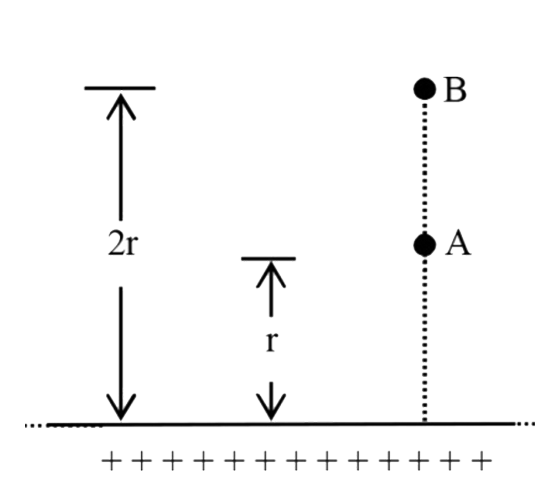A point charge Q is placed at the point O as shown in Fig. Is the potential difference (V)A−VB) positive, negative or zero if Q is (i) positive (ii) negative ?

Step by step video & image solution for A point charge Q is placed at the point O as shown in Fig. Is the potential difference (V)_(A) - V_(B)) positive, negative or zero if Q is (i) positive (ii) negative ? by Physics experts to help you in doubts & scoring excellent marks in Class 12 exams.
Updated on:21/07/2023Similar Questions
In the part of a circuit shown in fig. 5.266, the potential difference (VG−VH) between points G and H will be

View SolutionFind the potential difference VA−VB between points A and B of the circuit shown in figure.

View SolutionPositive and negative charges of 1μC each are placed at two points as shown in the figure. Find the potential difference between A and B

View SolutionAn infinitely long line of linear charge density λ is shown in the figure. The potential difference VA−VB between the two points A and B is

View SolutionAssertion:A point charge q is placed near an arbitrary shaped solid conductor as shown in figures.The potential difference between the points A and B within the conductor remain same irrespective of the magnitude of charge q
Reason: The electric field inside a solid conductor is zero under electrostatic conditions

View SolutionFind the potential difference Va−Vb between the points (1) and (2) shown in each part of Fig.

View SolutionFigures (a) and (b) show the field lines of a positive and negative point charge respectively.

(a) Give the signs of the potential difference VP−VQ,VB−VA.
(b) Give the sign of the potential energy difference of a small negative charge between the points Q and P, A and B.
(c) Give the sign of the work done by the field in moving a small positive charge from Q to P.
(d) Give the sign of the work done by the external agency in moving a small negative charge from B to A.
(e) Does the kinetic energy of a small negative charge increase or decrease in going from B to A?
View SolutionDetermine the potential difference VA−VB between point A and B of the circuit shown in figure . Under what condition is it equal to zero ?

View SolutionP−V diagram of a cyclic process ABCA is as shown in Fig. Choose the correct alternative

(A)ΔQA→B= negative (B)ΔUB→C= positive (C)ΔUC→A= negative (D)ΔWCAB= negative
View SolutionFigure shows two rings having charges Q and −√5Q. Find potential difference a and B i.e. (VA−VB).

View Solution
